Self-loading carbine CB-51 (Spain)
Having limited experience in making small arms, Spanish engineers decided to use foreign ideas. Access to modern models of weapons and cartridges from other countries, as well as the involvement of foreign designers allowed to study other people's achievements, and then use them in their projects. So, one of the most interesting projects was created based on the results of a study of American weapons and the German patron.
In 1951, the arsenal of La Coruna presented several new models at once: two variants of an automatic rifle for an intermediate cartridge, as well as a self-loading carbine using similar ammunition. All these projects were created under the leadership of Lieutenant Colonel Joaquín de la Calsada-Bayo and received similar names. For example, the carbine was designated as Mosqueton CB-51 - Calzada Bayo of the 1951 model. A similar name (Fusil Asalto CB-51) was also obtained by two parallel-developed automatic rifles. This fact can lead to some confusion.
Available data suggest that when developing a new carbine for the Spanish army, gunsmiths led by Lieutenant Colonel De La Calzada-Bayo decided to base the American product M1 Carbine. In this case, however, it was not a direct copying of the existing sample. Existing solutions have been complemented with some new ideas of one kind or another. In addition, the CB-51 carbine was supposed to use a different cartridge - the German 7,92х33 mm Kurz.
From the American project borrowed a number of basic ideas and technical solutions. So, the Spanish carbine was supposed to be a long-barreled weapon with automatic based on the energy of powder gases. Details that cause the ergonomics of weapons, also borrowed without significant changes. However, in the design there were some original go, significantly affecting the appearance and characteristics of the weapon.
The carabiner CB-51 received a fairly simple receiver. It was a device of sufficient length with a curved upper lid, which was distinguished by a small height. The trunk and the longitudinal support beam were attached to such a box in front for mounting some parts. Bottom provided for mounting the installation of the mine shop and the body of the firing mechanism. The latter is performed in the form of an L-shaped device with a set of axes, pins, etc. Behind from the case USM departed inclined support of the fuse button.
The weapon was equipped with a rifled barrel of a relatively large length caliber 7,92 mm. The chamber was designed for a sleeve length 33 mm. With the help of several clamps, the barrel was connected to gas engine devices and other automation components. It should be noted that the devices under the barrel did not close the receiver. The functions of the casing for their protection were performed by a wooden box of great length.
The gas chamber from the automatics was under the barrel, at a sufficiently large distance from the muzzle. Through the gas outlet in the lower part of the barrel, the gases entered the cavity of the cylindrical body, where they worked on the piston. He had a hard connection with a large piece that served as a bolt carrier. In its composition there were mounting for the installation of the piston, the side pusher and the rear node for connection with the gate. As with the M1 Carbine, the CB-51 carbine used automatics with a short piston stroke.
The shutter for the new weapon, apparently, with minimal changes borrowed from the American carbine, finalized in accordance with the dimensions of the cartridge 7,92x33 mm "Kurz". It was made in the form of a long cylindrical part with a pair of lugs in the front. The extractor and drummer were located in the corresponding cavities, as well as their springs. The outer surface of the gate had grooves for interaction with the control lugs of the receiver. Moving back and forth, the shutter had to rotate. In the extreme forward position, its lugs were engaged with the grooves of the receiver, ensuring the locking of the barrel.
The carbine was equipped with two return springs. They were installed using rods-guides and placed between the front of the receiver and the gas piston. Among other things, it allowed to reduce the required volume of the receiver and reduce the size of the weapon.
On the bottom frame under the receiver were placed parts of a simple trigger mechanism. For the shot was used spring-loaded trigger, held in the cocked position with a trigger. The design of the trigger ensured firing only single. An interesting innovation in the CB-51 project is the non-automatic fuse. On the rear ledge of the USM case there was a swinging key, the inner arm of which was in contact with other parts of the mechanism. The principle of operation of such a fuse was quite simple. Holding the butt-neck, the shooter pressed the key inside, which led to the unblocking of the trigger.
In addition, the key could be used to lock the shutter in the open position. In such a case, the lower part of the bolt, when it was retracted, entered into engagement with a swinging lever controlled by a key. When you press the key, the shutter was unlocked, which then went ahead and sent the next cartridge.
Carabiner proposed to use with the shops of two types. In both cases, it was a question of detachable box-shaped devices with a spring-loaded pusher. The store was placed in the receiver's shaft at the bottom of the weapon and was fixed in its place with a latch. A short magazine for five 7,92x33 mm cartridges was created, which completely fit in the mine and did not protrude beyond the limits of the box. There was also a longer magazine for 20 cartridges. Certain features of such a shop suggest that when it was created, Spanish gunsmiths used existing products of German design.
The Mosqueton CB-51 self-loading carbine should be equipped with the simplest sights. At a minimum distance from the muzzle on the trunk was fixed low base of the front sight. The latter had an open ring protection. On top of the trunk, at the level of the space between the chamber and the gas chamber, there was a large tide, intended for the installation of an open mechanical sight. This device was equipped with a means of setting the range and making a lateral correction.
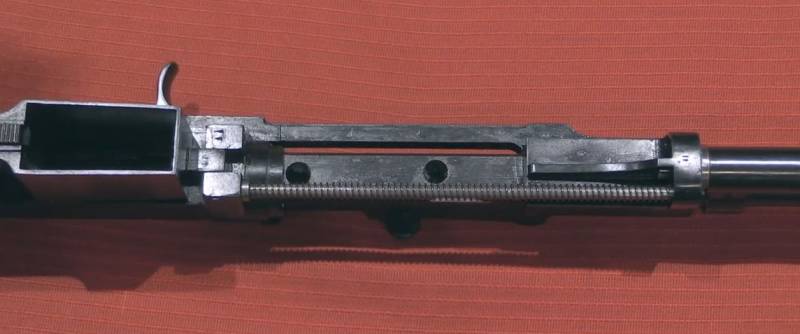
Bottom view of the trunk and mine shop. The right return spring is removed, the holes made during deactivation are visible
The Spanish project was actually a version of the modernization of the American M1 Carbine carbine, and therefore provided for the use of similar fittings. The receiver, the barrel and the gas engine assembly were installed in a wooden rifle box. In its shape of the box, it repeated the already existing products: it had a developed fore-fore-end, a pistol projection neck and a “traditional” butt. At the same time, in contrast to the hardware of the American edition, it had an additional groove for outputting the fuse button, which was located behind the window for the trigger bracket.
Much of the trunk, from the gas engine to the moving parts of the gate, was covered with a wooden lining. This detail was distinguished by a small height, and also had a window for outputting a sight.
Wooden parts were connected to metal with a few screws and clamps, worn on the entire assembly. At the front of the yoke, connecting the box with the lining, and on the butt there were sling for the belt. The front part of the box, which covered the gas engine, had a small channel for carrying the cleaning rod.
Borrowing basic ideas led to curious results. Thus, in terms of size and weight, the Mosqueton CB-51 carbine hardly differed from the base M1 Carbine. Its length did not exceed 850-900 mm, and the weight was 2,3-2,5 kg. Fire characteristics, according to various estimates, also remained at the level of American weapons.
According to known data, in 1951, the arsenal of La Coruna launched a batch of experienced new type carbines. A total of 12-like products were manufactured, which soon had to go to the test site for inspection. There is information about a series of tests of several prospective samples, one of which was the CB-51 karabiner, but detailed data are not available. How this weapon showed itself, and what conclusions the Spanish military came to is unknown. Unfortunately, even a few decades after the completion of the tests, the archives of Spain are in no hurry to share the most interesting information.
However, it is known that the Spanish armed forces did not receive a promising self-loading carbine, created on the basis of serial American weapons. Apparently, the command familiarized with the results of several projects, and did not share the enthusiasm of the designers. All of the developments in A Coruña’s arsenal, presented in 1951, have not progressed beyond testing. It can be assumed that such results were related both to the technical problems of the developed samples and to the special requirements of the customer.
What were the pros and cons of the self-loading carbine presented - is unknown, but it still did not go into service and did not become the subject of an order for mass production. 12 experienced products were left idle and without a future. In the near future, the weapons that were no longer needed were to be melted down. To the delight of weapons lovers and historians, not all the experienced party was destroyed. At least two carbines survived and soon became museum exhibits. However, it was not without certain problems. Due to the specifics of the weapon legislation of Spain, both of the surviving samples were deactivated - holes were made in the trunks, making shooting impossible.
At least one of the surviving carbines has an interesting feature. The name and other information was twice affixed to the side surface of its receiver, one of which is under the wooden box. Perhaps, while performing the engraving, an unknown master gunsmith missed and put the text lower than it should. After that, the second line was needed.
It should be noted that the parallel development project of the automatic rifle Fusil Asalto CB-51 was a bit more successful. Prototypes of two modifications, using different types of cartridges, were tested, but also did not receive recommendations for adoption. However, the military did not completely abandon such projects. Joaquin de la Calzada-Bayo and his colleagues received a number of recommendations for the further development of the existing project. With updated requirements, engineers soon created a new automatic rifle, the CB-52.
Unlike the automatic rifle of the same name, the CB-51 self-loading carbine was not only not put into service, but was not further developed. In addition, the technical solutions underlying this project did not later find application in the creation of new types of small arms in Spain. However, the range of samples presented by the arsenal of La Coruna in 1951, was of great importance for the entire Spanish arms school, and also influenced its further work.
On the materials of the sites:
https://forgottenweapons.com/
http://thefirearmblog.com/
http://cetme.foroactivo.com/
http://municion.org/
- Ryabov Kirill
- Forgottenweapons.com

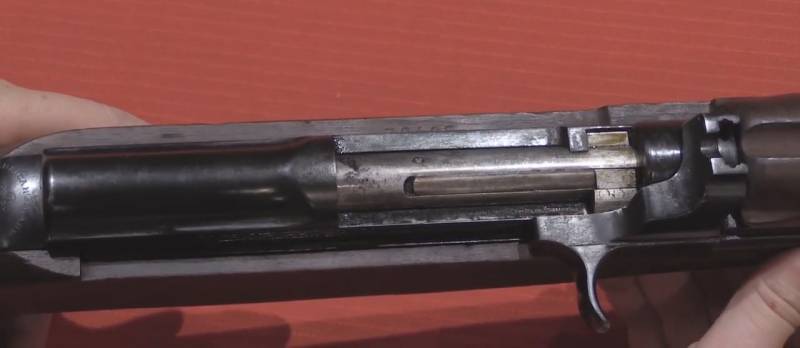

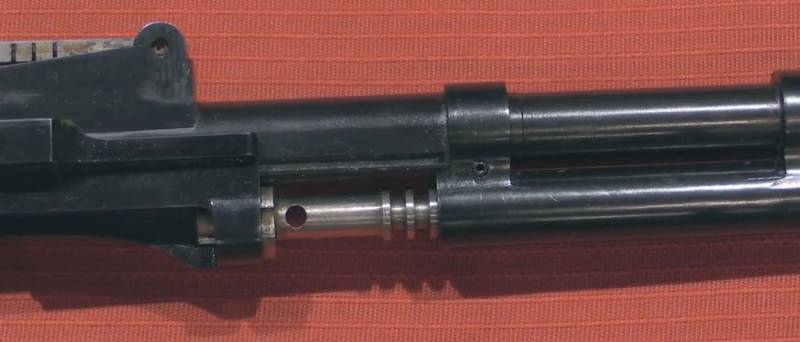
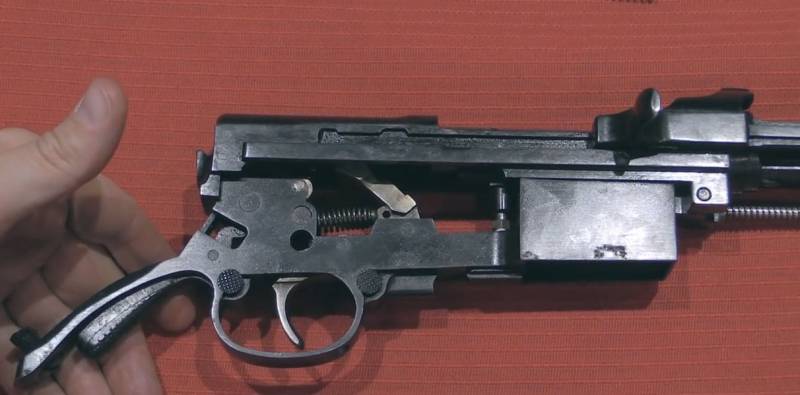
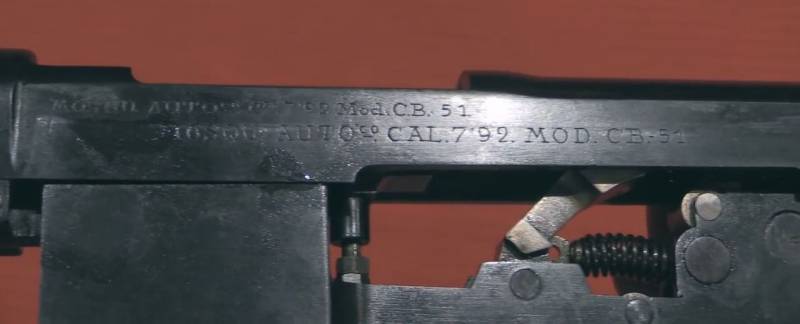
Information